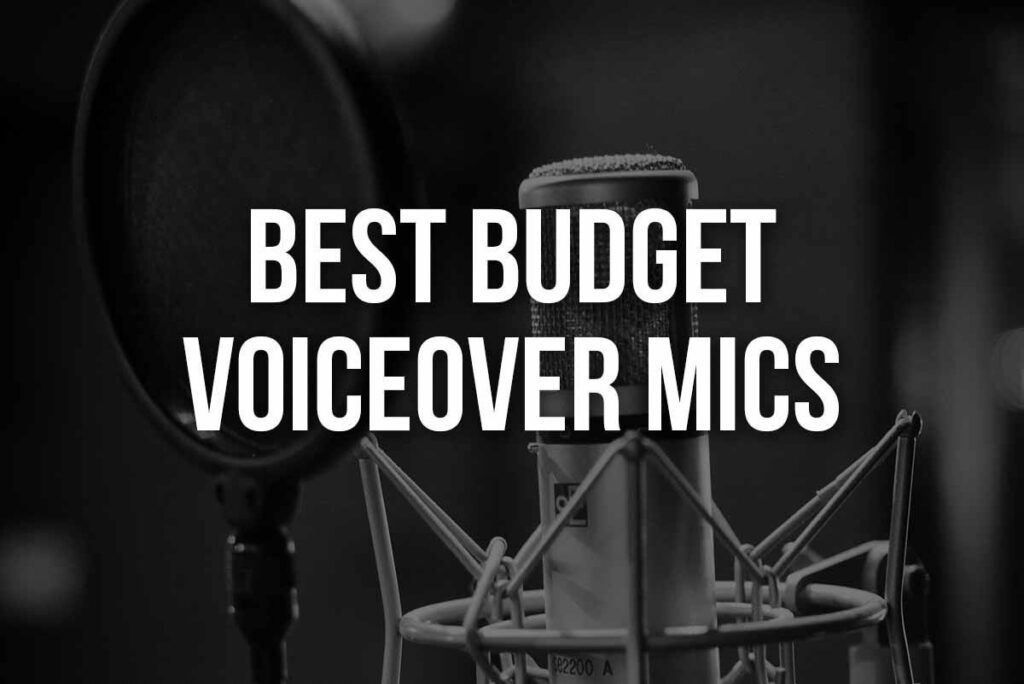If you’re just starting out with voiceovers or want to test the waters before going all-in, I’ll break down some of the best voiceover microphones you can buy on a budget. The options are nearly endless, but I’ll narrow the scope and point out some of the better options. Take a look at these mics for a few options to choose from that won’t empty your wallet.
Contents
Best Voiceover Mics on a Budget in 2022
MXL 990
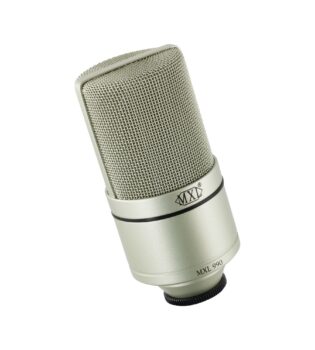
This 17mm (0.66″) diaphragm condenser microphone is possibly the best sub-$100 mic you can buy. It has a self-noise of 20 dB, which is good for the price. It requires 48 volts phantom power, so make sure your audio interface can supply that.
It has a cardioid pickup pattern with a maximum SPL of 130 dB, which means this mic can definitely handle any human voice you throw at it, plus nearly any amplified instrument in a studio setting. The EQ contour is fairly flat with a slight boost between 100-200Hz for that nice warm tone, and a presence boost between 5-12kHz.

The bottom line: for the price point, the MXL 990 is hard to beat. It’s one of those mics that could become your go-to workhorse for all kinds of applications, not just voiceover! Plus, it comes with a shock mount, mic stand adapter, and hard case all included in the price. See the MXL 990 on Amazon here.
RE320
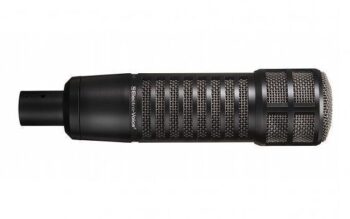
The ElectroVoice RE320 dynamic microphone is the little brother to the broadcast-classic RE20. This mic is the most expensive of these budget microphones but it’s hard to go wrong with its sound.
Because its a dynamic mic, you don’t need to supply 48 volts phantom power to it. The tradeoff is that you’ll need higher quality preamps that produce more clean gain. The Focusrite Scarlett Solo has some high-quality preamps as far as USB interfaces go. Alternatively, you can use a mic booster to pump up the signal level. Two popular models are the Triton Audio FetHead (Amazon) ![]() and the Cloudlifter CL-1 (Amazon).
and the Cloudlifter CL-1 (Amazon).
My recommendation: try this mic without the mic boosters first and see how it sounds. If you can’t hear any noise, then congratulations! You don’t need to add anything more to the chain.
As far as tone goes, this mic is generally neutral sounding with an EQ switch on the microphone body, so you can cut out some low end if you feel like there’s too much. This feature is typically used with musical instruments, but can be applicable if you have a bass-heavy voice or are trying to get rid of some room rumble. The RE320 is brighter than its big brother, the RE20, which can be good a good feature for voiceovers and bring you closer to a condenser sound than a lot of other dynamic mics.
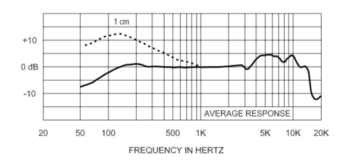
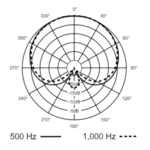
You can see the Electrovoice RE320 budget voiceover microphone here on Amazon.
AKG P220
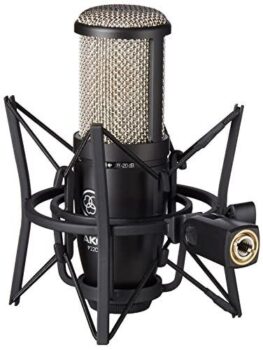
The AKG P220 is one step up from the P120, but the biggest advantage this mic has over the previously mentioned MXL 990 (and the little brother – AKG P120) is its self noise. This condenser mic has a self noise of 16dB (4dB less than the MXL 990). However, this lower self noise comes at roughly a $30 premium over the MXL 990.
Its diaphragm is 26.7mm (1 inch) making it a true large-diaphragm condenser mic. The frequency response is relatively flat across the majority of the band, with a high frequency boost between 7-12kHz. This high end boost could be a negative if your voice is particularly sibilant but otherwise is a great mic. The low self noise is one of the best for the money, following the law if diminishing returns of course. Something like the Neumann TLM103 (Amazon) has an incredibly quiet self noise level of just 7dB with a price tag of over $1000. So you can see how for just $30 more than the MXL 990, this mic gives you 20% less self noise.

Overall, if you’re willing to spend an extra ~$30, this mic outperforms the budget MXL 990 on paper. Check it out and see reviews of the AKG P220 on Amazon.
Final Notes
If you’re looking for a good microphone to get started with voiceovers, any of these are a good option. Condenser mics are typically better for commercial work where clarity and punch are needed, and dynamic mics are great for long-form spoken work like audiobooks where the listener’s ears can get tired of high clarity for extended listening periods.
Also check out the VoiceOver Tips guide on gear for beginners.

